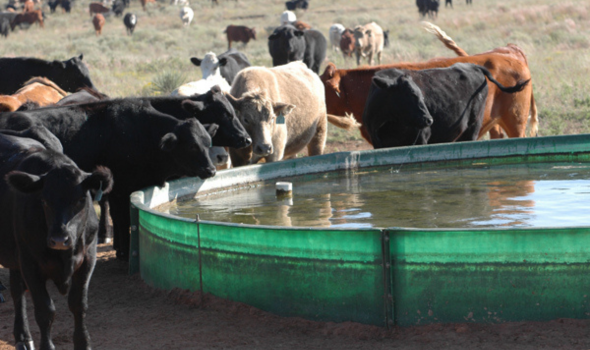
Ruminants
Understanding The Importance of Water Quality In Cattle Feeding
Water is a crucial element for all living beings on our planet to function. It is the foundation of our existence and there is no substitute for water. We use it for all our integral needs, so it is apt to call water a vital necessity, just like energy, macro & micro nutrients, proteins and minerals.
It is no secret that managing an animal’s nutrition is one of the most critical facets for livestock owners and dairy farmers, which includes paying attention to the quality of water to ensure good health and growth. Water also accounts for around 60 to 70% of an adult cattle’s weight and approximately 80% of a young cattle’s weight.
An average healthy livestock animal consumes about 60 to 80 litres of water per day. Hence, it becomes imperative for the handlers to provide a sufficient supply of quality, clean drinking water for their cattle’s immunity and day-to-day life functions.
Inadequate and unhygienic water for cattle can reduce milk yield and production, as well as pose serious health concerns.
The role of water in cattle feed:
- Manages cattle’s digestion of feed and forage.
- Supports healthy rumen function.
- Aids in the distribution of nutrient absorptions to various organs.
- Regulates body temperature.
- Assists in the removal of unwanted and harmful components through urine.
- Regulates volume of blood.
- Supports tissue functions.
Water also accounts for around 80 percent of the milk produced by the cow.
So, providing quality water to cattle ensures that they can stay healthy and perform to their highest optimal potential.
Problems:
Contamination of water in streams and wells in the cattle farm through
- Fertiliser tanks.
- Residuals from the farm such as manures and acids.
- Summer evaporation which produces excessive nitrates.
High concentration of Nitrates in the region that are unsafe and toxic, especially concerning reproductive health.
Cows permitted to drink from surface water sources such as ponds and rivers may be exposed to bacteria and pesticide-containing agricultural runoff through blue green algae. To ensure protection, it is better to safeguard certain regions with the help of restrictive barriers.
The Total Dissolved Solids [T.D.S] composition of the water should be monitored carefully as excess levels of T.D.S causes low lactation, reduced immunity and impacts overall Performance of the animal.
Conclusion:
Water quality should be considered as one of the key factors during the evaluation of the cattle and their herds during their low productivity phase. Tests and supervision should be frequently conducted for adverse factors affecting the water quality. This is the only way to ensure overall cattle welfare as a responsible livestock owner.









Add your comment